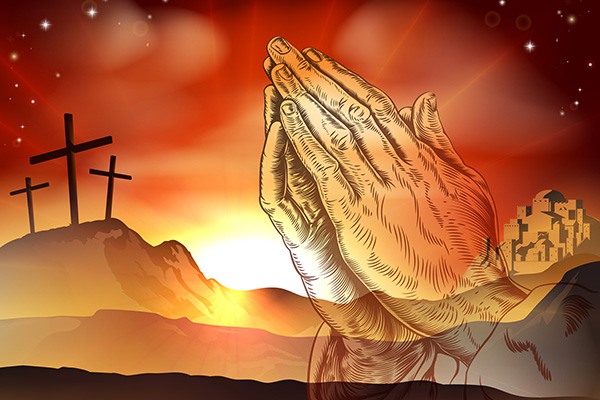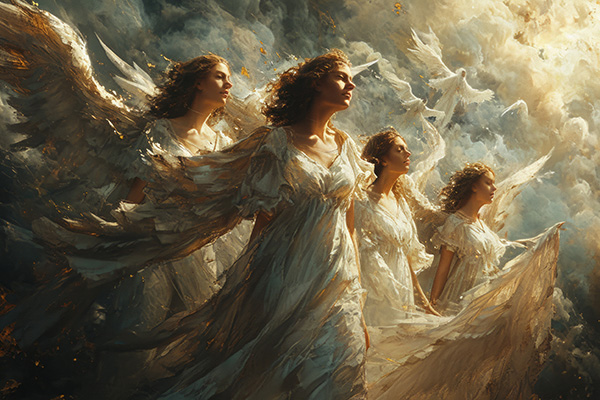prayer
The Touching Tale Of The Praying Hands
 In the fifteenth century, in a tiny village near Nuremberg, Germany, lived a family with 18 children. Yes, eighteen! To put food on the table for this mob, the father and head of the household, a goldsmith by trade, worked nearly 18 hours a day at his trade, as well as any other paying job he could find in the neighborhood.
In the fifteenth century, in a tiny village near Nuremberg, Germany, lived a family with 18 children. Yes, eighteen! To put food on the table for this mob, the father and head of the household, a goldsmith by trade, worked nearly 18 hours a day at his trade, as well as any other paying job he could find in the neighborhood.
Despite their seemingly hopeless situation, Albrecht and Albert, two of the older children, had a dream. They both wanted to pursue their talent for art, but they were well aware that their father would never be financially able to send either of them to an art academy.
After many long discussions at night in their crowded bed, the two boys finally worked out a pact. They would toss a coin. The loser would go down to the nearby mines and use his earnings to support his brother, who would attend the academy.
Then, after four years, when the brother who won the coin toss finished his studies, he in turn would support the mining brother to also attend the academy – either by selling his artwork or, if necessary, by working in the mines.
They tossed a coin one Sunday morning. Albrecht Dürer won the toss and went to Nuremberg to study art. Albert went down into the dangerous mines and spent the next four years financing his brother, whose creative work at the academy was almost immediately a sensation.
Albrecht’s etchings, woodcuts, and oils were far superior to those of most of his fellow students and even his professors, and by the time he graduated he was beginning to earn substantial fees for his commissioned works.
Practical Techniques For Psychic Protection
 Psychic protection, also known as spiritual or energetic protection, is a practice I hold dear because it helps shield me from negative energies, psychic attacks, and unwanted influences.
Psychic protection, also known as spiritual or energetic protection, is a practice I hold dear because it helps shield me from negative energies, psychic attacks, and unwanted influences.
The concept is not new. Mystical protection practices can be traced back to various ancient civilizations, indigenous traditions, Eastern philosophies, and Western esoteric practices.
In ancient Egypt, Greece, and Rome, amulets and talismans were worn and protective deities invoked to ward off negative energies and evil spirits. Indigenous cultures in the Americas and Africa used smudging and rituals to summon ancestral spirits for protection.
Eastern religious traditions such as Hinduism and Buddhism use mantras, yantras, and meditation for spiritual protection. Kabbalistic traditions emphasize the use of specific prayers and rituals to create spiritual shields. These practices reflect a deep-rooted belief in the power of divine intervention and sacred symbols to provide protection.
In Catholicism, believers recite prayers such as the Lord’s Prayer or the prayer to St. Michael for protection from evil. They may also use holy water, crucifixes, or medals of saints as protective symbols. In Judaism, the recitation of Psalms and the use of amulets inscribed with Hebrew verses are common practices for protection against negative influences.
Contemporary spiritual communities have adapted these ancient practices to include the use of crystals, energy healing, and visualization techniques. Workshops, books, and teachings offer a wealth of methods for psychic protection, all aimed at maintaining a balanced, protected, and positive state of being. These diverse traditions and modern adaptations underscore the universal spiritual need to protect ourselves from unseen negative energies and dark influences.
What The Mind Believes, The Body Perceives
 Self-talk and inner dialogue play a crucial role in our overall well-being – body, mind and spirit. The way we think and talk to ourselves shapes our reality, affecting not only our emotions and moods, but also our physical health.
Self-talk and inner dialogue play a crucial role in our overall well-being – body, mind and spirit. The way we think and talk to ourselves shapes our reality, affecting not only our emotions and moods, but also our physical health.
For example, if we wake up and immediately think, “I feel terrible. I’m still exhausted. I don’t want to face the day,” our body will respond in kind. We’ll move sluggishly, feel each ache more intensely, and reinforce a state of fatigue.
Negative self-talk can even affect digestion, metabolism, and immune function because the body takes its cues from the mind. When we repeatedly tell ourselves that we lack energy, the body responds by slowing down.
However, when we consciously shift our thoughts to a more positive perspective, we cultivate an inner environment that supports healing, resilience, and vitality.
The same principle applies to how we perceive ourselves physically. If we stand in front of the mirror and focus on perceived flaws, our posture and energy will reflect that self-criticism. We may unconsciously choose clothing that reinforces our negative self-image and move through the day with slumped shoulders and diminished confidence. Our bodies reflect the beliefs we hold about ourselves.
Conversely, when we practice self-talk that is uplifting and empowering, our body responds accordingly. By consciously choosing to carry ourselves with confidence, even if it feels unnatural at first, we initiate a shift in both our emotional and physical states.
Clearing Toxic Energy From Your Home
 When I do a reading for a client, I not only read their energy, but I also tune into the energy of their loved ones, co-workers, friends, home and work environments, and community. Often, it quickly becomes apparent that the client’s home environment is toxic, stagnant, or energetically polluted, deeply affecting their health, well-being, and spiritual harmony.
When I do a reading for a client, I not only read their energy, but I also tune into the energy of their loved ones, co-workers, friends, home and work environments, and community. Often, it quickly becomes apparent that the client’s home environment is toxic, stagnant, or energetically polluted, deeply affecting their health, well-being, and spiritual harmony.
In these cases, clients often report a mix of physical and emotional symptoms commonly seen with energy pollution, which may include fatigue, irritability, anxiety, depression, oversleeping or insomnia, cravings for sugar, caffeine, or alcohol.
Sometimes there are also spiritual, supernatural, or paranormal issues in the home. These may include a persistent feeling of “being watched” or an unexplained heaviness or unusual temperature variations in certain areas of their home.
Clients may also describe disturbing dreams and nighmares, an inability to connect with their intuition, or a sense of spiritual detachment. Some even mention hearing unexplained noises or experiencing a frequent loss of items in the home that later turn up in strange or unexpected places.
The reason for this is that a energetically polluted environment tends to amplify negative spiritual attachments or attract energies that feed on the chaos. Such clients often express difficulty maintaining protective spiritual practices, such as meditation or grounding, and feel that their energy feeling drained or blocked.
Living In A State Of Transcendence
 Many people may claim to live in a state of spiritual enlightenment, to be fully aware and to have a deep connection with the divine. However, what many believe to be enlightenment is often far from the truth.
Many people may claim to live in a state of spiritual enlightenment, to be fully aware and to have a deep connection with the divine. However, what many believe to be enlightenment is often far from the truth.
There is a veil — a mental barrier — before most people that prevents them from seeing the greater spiritual truths that lie beyond the ordinary world. Although many people long to lift this veil, to look beyond the surface and access a more expansive reality, it can be incredibly difficult to reach this state of bliss.
However, once you do break through, the liberation and freedom you feel is incomparable. It’s a feeling that is difficult to describe with words, but it’s something that everyone is capable of experiencing.
The path to transcendence is a path of spiritual growth and soul evolution. When you reach this blissful state — when your soul has truly expanded — you move to a higher frequency, one that is different from the frequency to which most people are attuned.
For much of my life, I felt like a misfit — a person who didn’t quite fit into the mainstream world. I felt disconnected from social norms and expectations. But today, I embrace that feeling. I’ve come to realize that being an individual, separate from the chaos of the world, is one of the greatest gifts I could have. I no longer need to be part of a particular group or adhere to a particular set of societal standards. This freedom allows me to live authentically and to help others reach the same state of bliss and spiritual awareness.
How To Counteract Toxic Technology
 The other day I was sitting at a traffic light waiting for the light to turn green, when I noticed something odd. Everyone around me was bowing their heads. For a split second, I thought I was witnessing some kind of miracle. Were they all having a quiet moment of prayer together?
The other day I was sitting at a traffic light waiting for the light to turn green, when I noticed something odd. Everyone around me was bowing their heads. For a split second, I thought I was witnessing some kind of miracle. Were they all having a quiet moment of prayer together?
But, of course, no one was praying. They were all glued to their cell phones!
At first I laughed at myself for jumping to such a naive spiritual conclusion. But then it hit me: this tiny snapshot of life says so much about the world we live in today.
We’ve all heard the wild rumors over the years about microchips being implanted in people’s hands, arms, or foreheads. Conspiracy theories and fear-mongering about futuristic technology have kept these ideas on the fringes of our culture and in the back of our minds for decades.
There was a time not so long ago when it still sounded like something out of a science fiction movie, right? But look at us today. We’ve been chipping our pets since the late ’80s. So, is the leap to humans really that far-fetched? Probably not.
And let’s not forget the biblical prophecy of the “mark of the beast” mentioned in the Book of Revelation. What if this predicted dystopia is unfolding right under our noses – but in a much less dramatic way?
Who needs implanted microchips when we are all clutching our smartphones 24/7? That beastly microchip doesn’t need to be under our skin; maybe it’s already permanently in our hands! And it has our full, undivided attention all day long.
